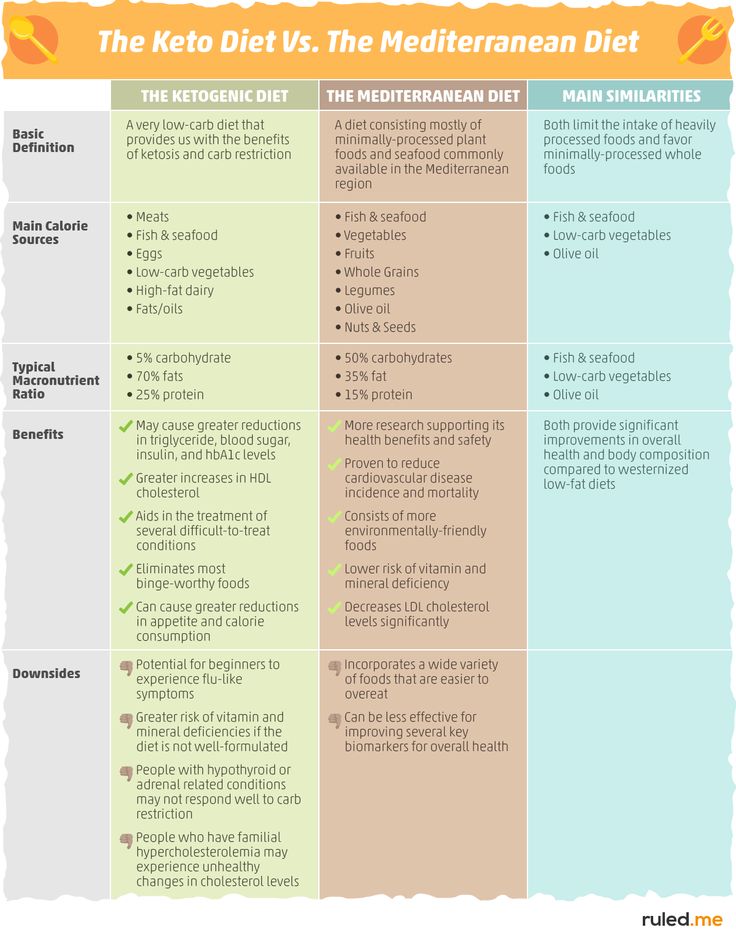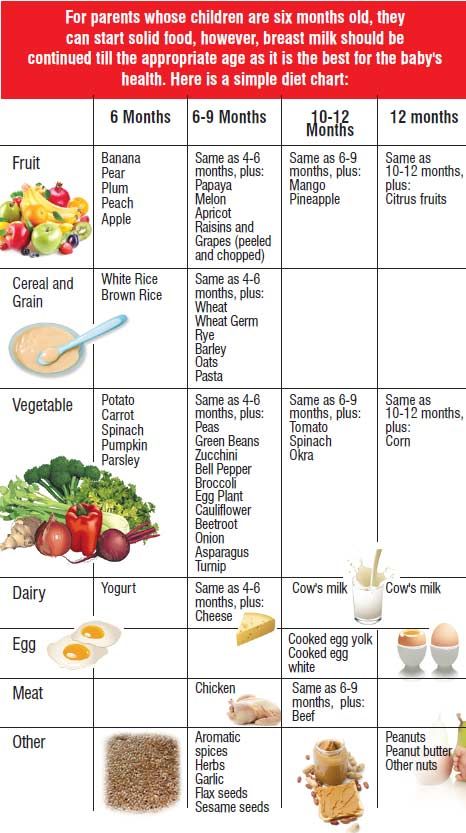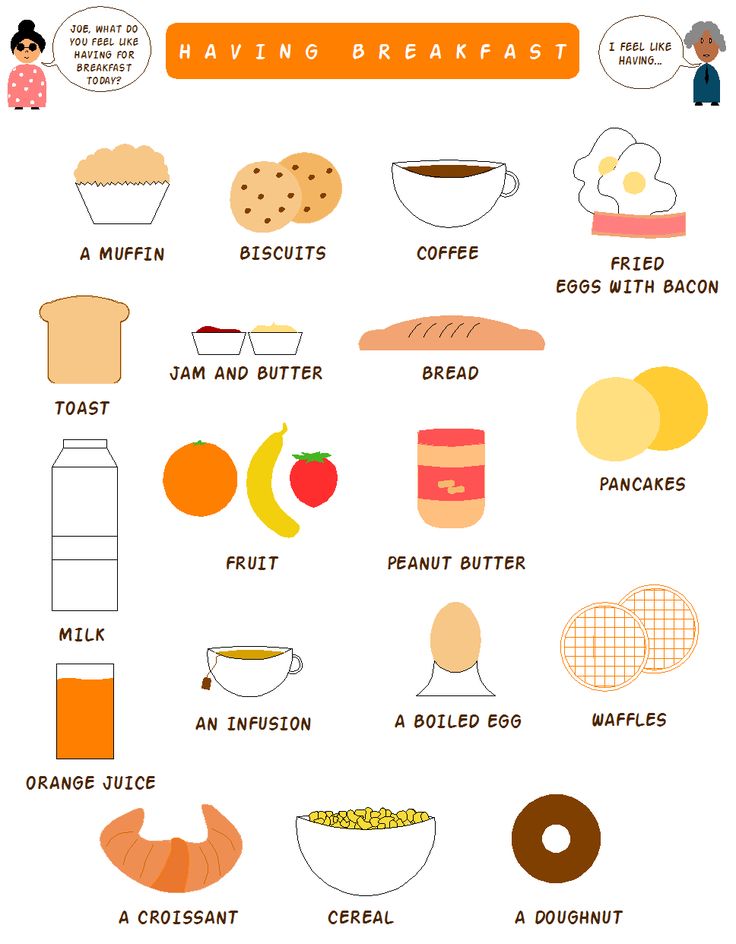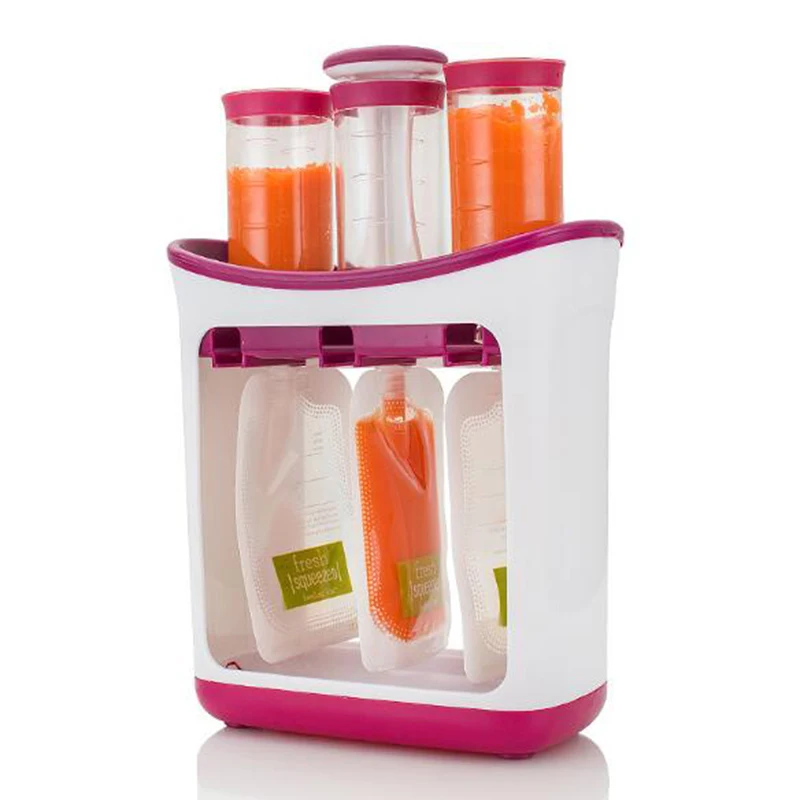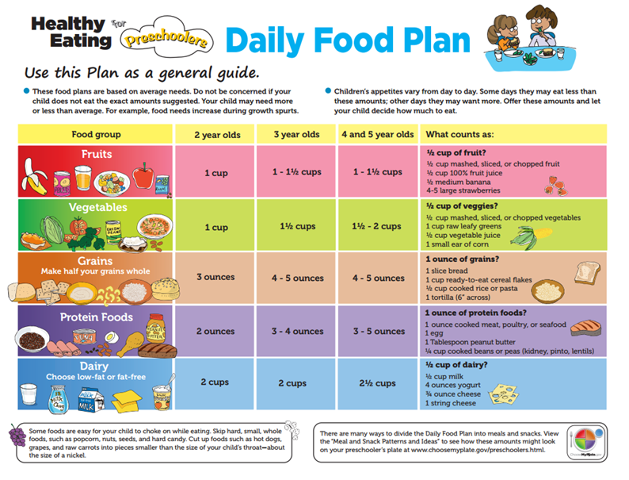Difficulty breast feeding baby
6 breastfeeding problems in the first week – solved
Having trouble breastfeeding your newborn? Read our expert tips and watch videos to solve common breastfeeding problems in the first week.
Share this content
Cathy Garbin, child health nurse, midwife and lactation consultant:
For seven years, Cathy was a Research Associate with the renowned Hartmann Human Lactation Research Group, while supporting breastfeeding mothers in their homes and in hospitals. The mum of two still works with families, and also conducts study days for healthcare professionals and speaks at international conferences.
Breastfeeding isn’t always easy and if you’re experiencing difficulties you’re not alone. In fact a US study of more than 500 mums found that 92% reported breastfeeding challenges by day three1. Thankfully, many early breastfeeding difficulties are simple to deal with – here are my solutions to the most common problems mums experience in the first week.
I have sore nipples what should I do?
Problem 1: Breastfeeding hurts!
Pain while breastfeeding is usually down to sore, tender nipples, especially once your milk ‘comes in’ around two to four days after giving birth.2 Your baby will be feeding every couple of hours, which means the problem can worsen quickly, with some mums finding their nipples crack, bleed or become blistered. Ouch!
Solutions3
- Check your baby’s latch. Your baby not latching correctly is the most likely cause of breastfeeding pain. Your newborn should have a large portion of the lower part of the areola (the dark skin around your nipple) in her mouth when she feeds, with your nipple against the roof of her mouth, cupped gently underneath by her tongue.
- See a lactation consultant or breastfeeding specialist to make sure your baby’s mouth and body are positioned correctly and that there are no other latching problems.
 They can also check inside your baby’s mouth to see if there is a physical problem.
They can also check inside your baby’s mouth to see if there is a physical problem. - Try different breastfeeding positions. A laid-back, cross-cradle, underarm (‘rugby ball’) or lying-down hold may take the pressure off the most painful areas of your breast.
- Wipe damaged nipples gently with several pieces of water-moistened cotton wool after feeding to remove any debris that could lead to infection.
- Air-dry nipples or dab with a very clean, soft muslin or flannel, as infection can flourish in damp conditions. Use either disposable or washable nursing pads to absorb any milk leakage, remembering to change them regularly.
- Soothe your nipples. Relieve soreness and any dry skin with ultra-pure lanolin cream or gently apply a few drops of your own breast milk – you won’t have to remove either before the next feed. You could also try hydrogel pads straight from the fridge.
 These nipple dressings cool and provide instant breastfeeding pain relief, while creating ideal conditions for healing.
These nipple dressings cool and provide instant breastfeeding pain relief, while creating ideal conditions for healing. - Protect your nipples. Breast shells prevent your clothes from rubbing against sore areas.
- Be patient. Soreness normally settles down after a few days as your body gets used to breastfeeding and your baby’s sucking becomes more efficient.
- Consult a healthcare professional, lactation consultant or breastfeeding specialist if the pain while breastfeeding doesn’t subside after a few days. Ongoing nipple soreness can be a sign of an infection that may require medication.
Problem 2: My baby is not latching properly
Some newborns just don’t seem to manage to get a great latch – perhaps because you both need a little more time to get breastfeeding coordinated, or because they were born prematurely, are uncomfortable after a difficult birth, or their mum has flat or inverted nipples.
Solutions
- Get support from a lactation consultant or breastfeeding specialist who can diagnose the cause of the problem and develop a plan to help you overcome it.
- Draw out inverted or flat nipples. Nipple formers fit comfortably inside your bra, and apply a gentle pressure that can help draw out your nipples to support breastfeeding.
- Adopt different holds to make things easier for your newborn. She needs to feel supported, comfortable, and able to breathe in order to feed effectively. Make sure you’re not holding her head or pushing it. A laid-back, baby-led feeding style encourages your baby to use her innate reflexes, making it easier for her to reach your breast and latch on.4
- Make tiny adjustments while feeding. Rather than take your baby on and off the breast, creating frustration for you both, try ensuring she’s well positioned and comfortable.
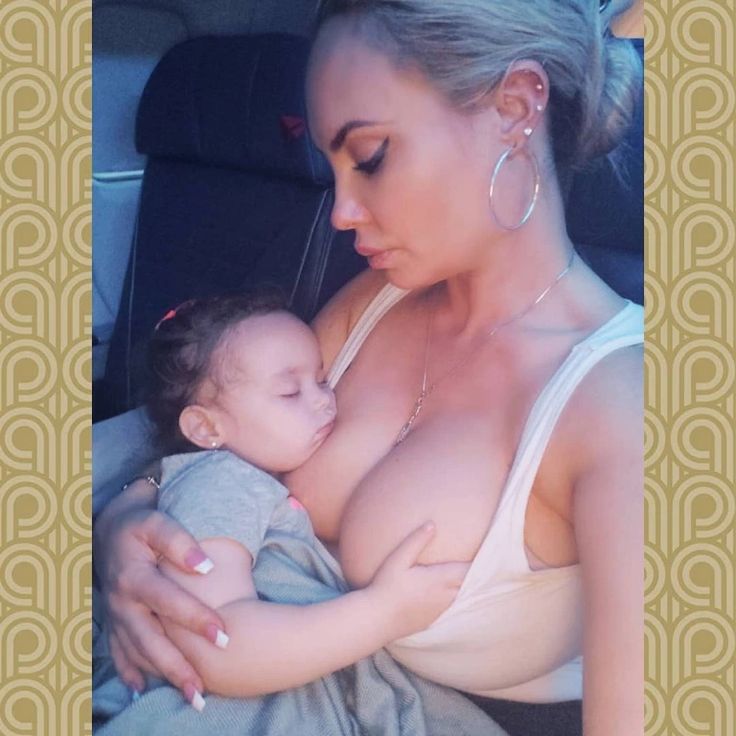 Keep her body and bottom close to you, support her across her shoulder girth, and hold her firmly so she feels secure. Let her head rest on your wrist so it can tilt back slightly and allow more space for her nose to breathe. Her chin should be close to your breast. If minor adjustments don’t seem to be improving your baby’s comfort, seek support from a lactation consultant or breastfeeding specialist.
Keep her body and bottom close to you, support her across her shoulder girth, and hold her firmly so she feels secure. Let her head rest on your wrist so it can tilt back slightly and allow more space for her nose to breathe. Her chin should be close to your breast. If minor adjustments don’t seem to be improving your baby’s comfort, seek support from a lactation consultant or breastfeeding specialist. - Feed through nipple shields. If your baby will not latch on, a lactation consultant or breastfeeding specialist may recommend using nipple shields to give your baby a larger, firmer target to attach to. In general, nipple shields should be considered a short-term solution.
The top 8 tips if your baby has lost too much weight
Problem 3: I do not have enough breast milk
Initially you’ll make a small amount of breast milk because the hormonal changes that trigger your milk production happen slowly, and won’t be finished until around day two to four. 2 This may cause you to worry your baby isn’t getting enough, but as her stomach is only tiny at first and she feeds frequently, it’s not a problem. During the first few days you only need to be concerned if your baby is losing more weight than expected and producing too few wet and dirty nappies, or is showing signs of dehydration. For a full explanation of how often your newborn should be weeing and pooing, read breastfeeding a newborn: what to expect in the first week.
2 This may cause you to worry your baby isn’t getting enough, but as her stomach is only tiny at first and she feeds frequently, it’s not a problem. During the first few days you only need to be concerned if your baby is losing more weight than expected and producing too few wet and dirty nappies, or is showing signs of dehydration. For a full explanation of how often your newborn should be weeing and pooing, read breastfeeding a newborn: what to expect in the first week.
Solutions
- Seek support from a lactation consultant, breastfeeding specialist or healthcare professional, who’ll be able to assess if you have a milk supply problem. The earlier you get help, the better.
- Feed on demand, not to a schedule. In the first week after birth your newborn will want to feed at least every two to three hours (maybe more!) throughout the day and night. This frequency helps to build your milk production.
- Look after yourself.
 It’s not always easy with a newborn, but try to rest when you can, eat well, and get as much help as possible with chores and any older children so you can focus on breastfeeding.
It’s not always easy with a newborn, but try to rest when you can, eat well, and get as much help as possible with chores and any older children so you can focus on breastfeeding. - Try expressing. If your baby is feeding often and still not putting on weight, a lactation consultant or breastfeeding specialist may recommend pumping to build your milk supply. If your milk hasn’t come in yet, the Medela Symphony hospital-grade double electric breast pump has an ‘Initiate’ program that mimics the way a newborn feeds in the first few days.
Problem 4: My breasts are really full and hard
When your milk comes in, your breasts will become fuller and firmer. If your baby is feeding well and frequently, this should pass without problems. However, some women’s breasts become rock hard, and they may also be tender, uncomfortable, even painful – a condition called breast engorgement. Engorged breasts may also feel fairly hot due to all the activity inside – it’s like a traffic jam in there! Although it’s only temporary, often lasting 24 to 48 hours, engorgement can also make it difficult for your baby to latch, as your nipples may become flattened. 5
5
Solutions
- Feed your baby frequently. Aim to feed at least eight to 12 times every 24 hours. This is the primary treatment for this condition – for more tips and advice read our article on breast engorgement.6,7
- See a healthcare professional, lactation consultant or breastfeeding specialist if the symptoms last more than 48 hours, you have a fever, or your baby is unable to breastfeed because of the engorgement.
Problem 5: My breasts are leaking
Leaky breasts are very common in the early days of breastfeeding, once your milk has come in. You may leak from one breast when you’re feeding your baby from the other, when lying on your front while sleeping, or when something stimulates your let-down reflex unexpectedly – like another baby crying in the supermarket. Leaking usually settles down after six weeks or so.
Solutions
- Protect your clothes by wearing disposable or washable nursing pads inside your bra day and night.

- Don’t waste a drop! Milk collection shells fit inside your bra to collect any leaked milk. They’re helpful when the leakage is too much for nursing pads, or if one nipple tends to drip while you’re feeding from the other. If you want to save the collected milk, you can, but only use milk you’ve collected during a breastfeed. Store in a sterile container and, if you’re not feeding it to your baby straight away, place in the fridge immediately and use within 24 hours. Don’t wear collection shells for more than two to three hours at a time.
Problem 6: I think I’m producing too much milk
Sometimes when your milk comes in, it really comes in! You may have a temporary oversupply for the first few weeks but it should settle down soon.7 Until then your breasts may feel painful and hard most of the time, even straight after a feed, and you might be leaking a lot of milk. Your baby may cough and splutter with the force of your let down, vomit as soon as she is moved after feeds, and have an uncomfortable tummy or explosive, frothy, greenish poos. All this suggests you may have too much milk, but this issue may resolve itself as soon as your breasts adjust to their new job.
All this suggests you may have too much milk, but this issue may resolve itself as soon as your breasts adjust to their new job.
Solutions
- Express a little milk by hand at the start of each feed to reduce the force of your let down.
- Try the laid-back breastfeeding position so your baby can better control the flow of milk. Or use the cradle position: holding her across her shoulders, ensuring your baby’s head is tilting back slightly and resting on your wrist. Her body will be resting on yours, sloping down diagonally.
- Be gentle and patient. Allow your baby to rest and digest her milk, both during and after a feed. Moving her around too much or too quickly could make her feel sick. As she grows, she’ll get better at coping with the flow, which is likely to slow in any case.
- Use a towel or muslin cloth to soak up the surge if your baby gets overwhelmed when your milk starts to flow, and put a milk collection shell on your other breast to catch any leaks.

- Seek advice from a lactation consultant or breastfeeding specialist if you’re still having difficulties after several weeks. They will assess you, and may advise on one-sided feeding or block feeding if you need to reduce your milk supply.
Read on: Breastfeeding difficulties in the next few weeks and breastfeeding challenges after the first month
References
1 Wagner EA et al. Breastfeeding concerns at 3 and 7 days postpartum and feeding status at 2 months. Pediatrics. 2013:peds-2013.
2 Pang WW, Hartmann PE. Initiation of human lactation: secretory differentiation and secretory activation. J Mammary Gland Biol Neoplasia. 2007;12(4):211-221.
3 Cadwell K. Latching‐On and Suckling of the Healthy Term Neonate: Breastfeeding Assessment. J Midwifery & Women’s Health. 2007;52(6):638-642.
4 Colson SD et al. Optimal positions for the release of primitive neonatal reflexes stimulating breastfeeding. Early Hum Dev. 2008;84(7):441-449.
Early Hum Dev. 2008;84(7):441-449.
5 Jacobs A et al. S3-guidelines for the treatment of inflammatory breast disease during the lactation period. Geburtshilfe Frauenheilkd. 2013;73(12):1202-1208.
6 Amir LH. Academy of Breastfeeding Medicine Protocol Committee. ABM clinical protocol# 4: Mastitis, revised March 2014. Breastfeed Med. 2014;9(5):239-243.
7 Academy of Breastfeeding Medicine Protocol Committee. ABM clinical protocol# 20: Engorgement. Breastfeed Med. 2009;4(2):111-113.
Common breastfeeding problems - NHS
If you have any problems with breastfeeding, it's important to ask for help from your midwife, health visitor or a breastfeeding specialist as soon as possible.
That way issues like sore nipples or breast engorgement can be sorted out early.
Here are some of the problems breastfeeding mums sometimes have, plus tips on how to tackle them.
Sore or cracked nipples
Sore nipples usually happens because your baby is not well positioned and attached at the breast.
Putting up with it could make pain or discomfort worse, so it's important to get help from your midwife, health visitor or breastfeeding specialist as soon as you can.
See more advice on sore nipples.
Not enough breast milk
When you first start breastfeeding, you may worry that your baby is not getting enough milk. It can take a little while before you feel confident that your baby is getting what they need.
Learn the signs that your baby is getting enough milk.
Offering your baby both breasts at each feed and alternating which breast you start with will help to stimulate your milk supply. So will keeping your baby close and holding them skin to skin.
Speak to your midwife, health visitor or a breastfeeding specialist if you're worried your baby is not getting enough milk.
Breast engorgement
Breast engorgement is when your breasts get too full of milk. They may feel hard, tight and painful.
Engorgement can happen in the early days when you and your baby are still getting used to breastfeeding. It can take a few days for your milk supply to match your baby's needs.
Engorgement can also happen when your baby is older and not feeding so frequently, perhaps when they start having solid foods.
See how to manage breast pain while breastfeeding.
Baby is not latching on properly
Breastfeeding is a skill that you and your baby need to learn together. It may take you both a while to get the hang of it.
If you are finding breastfeeding painful or your baby does not seem to be satisfied after feeds, they may not be latching onto the breast properly.
Find out how to latch your baby on.
Learn the signs that your baby is well attached.
Video: How do I know if my baby is properly latched?
In this video, a midwife talks about how to check if your baby is latched on properly when breastfeeding.
Media last reviewed: 4 October 2022
Media review due: 4 October 2025
Too much breast milk
Occasionally women make too much breast milk and their babies struggle to cope.
It's best to get your midwife, health visitor or breastfeeding specialist to watch a feed to see if they can spot why this is happening. They can also show you different positions to help your baby cope with large amounts of milk.
Breastfeeding and thrush
Thrush infections can sometimes happen when your nipples become cracked or damaged. This means the candida fungus that causes thrush can get into your nipple or breast.
This means the candida fungus that causes thrush can get into your nipple or breast.
If you suspect you or your baby has a thrush infection, see your health visitor or GP.
See how to spot the signs of thrush while breastfeeding.
Blocked milk duct
If breast engorgement continues, it can lead to a blocked milk duct. You may feel a small, tender lump in your breast.
Frequent feeding from the affected breast may help. If possible, position your baby with their chin pointing towards the lump so they can feed from that part of the breast.
See more help for breast pain, including pain from blocked milk ducts.
Mastitis
Mastitis (inflammation of the breast) happens when a blocked milk duct is not relieved. It makes the breast feel hot and painful, and can make you feel very unwell with flu-like symptoms.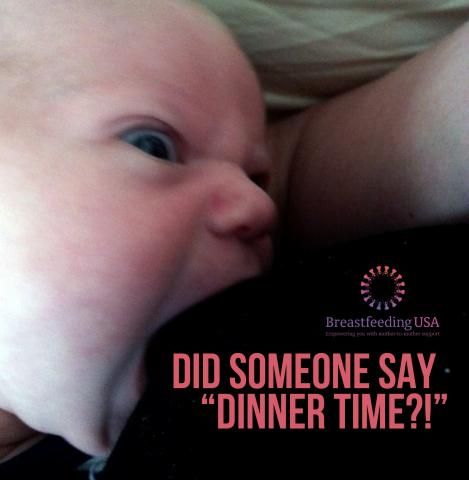
It's important to carry on breastfeeding. Starting feeds with the tender breast may help.
See more help for breast pain, including pain from mastitis.
If you are no better within 12-24 hours, or if you feel worse, contact your GP or out-of-hours service as you may need antibiotics.
Breast abscess
If mastitis is not treated, or if it does not respond to treatment, it can lead to a breast abscess, which may need an operation to drain it.
Read more about breast abscesses.
Breastfeeding and tongue tie
In some babies, the strip of skin that attaches the tongue to the floor of the mouth (frenulum) is shorter than usual. This is known as tongue tie.
Some babies who have a tongue tie do not seem to be bothered by it. In others, it can stop the tongue moving freely, which can make it harder for them to breastfeed.
In others, it can stop the tongue moving freely, which can make it harder for them to breastfeed.
The good news is that tongue tie easily treated.
Find out more about tongue tie
Got a breastfeeding question?
Chat to the Start4Life Breastfeeding Friend chatbot on Amazon Alexa, Facebook Messenger or Google Home for fast, friendly, trusted NHS advice anytime, day or night.
Solutions to six breastfeeding problems in the first week
Are you having difficulty breastfeeding your newborn baby? Read on for expert advice on tackling the main challenges of the first week of breastfeeding.
Share this information
Cathy Garbin, child health nurse, midwife and lactation consultant:
Cathy, a mother of two, was a research fellow at the renowned Human Lactation Research Institute, founded by Peter Hartmann, for seven years, providing support to breastfeeding mothers in clinics and at home. Today, she still works as a family counselor, and also conducts seminars for attending physicians and speaks at international conferences. nine0003
Today, she still works as a family counselor, and also conducts seminars for attending physicians and speaks at international conferences. nine0003
Breastfeeding is not always easy, so if
you are having difficulty, know that you are not alone. A US study found that out of 500 new mothers surveyed, 92% experienced breastfeeding problems by the third day. 1 Fortunately, most early breastfeeding problems are easy to resolve. Below you can read recommendations for solving the main problems that mothers often face in the first week of feeding. nine0003
Problem #1. Breastfeeding hurts!
Pain during feeding is usually associated with tenderness or inflammation of the nipples, especially when milk "comes" on the second to fourth day after birth. 2 The baby will beg for a breast every couple of hours, and this can quickly aggravate the problem: some mothers' nipples crack, bleed, or blister. This is, of course, very annoying.
Solutions 3
- Check how the baby latch on.
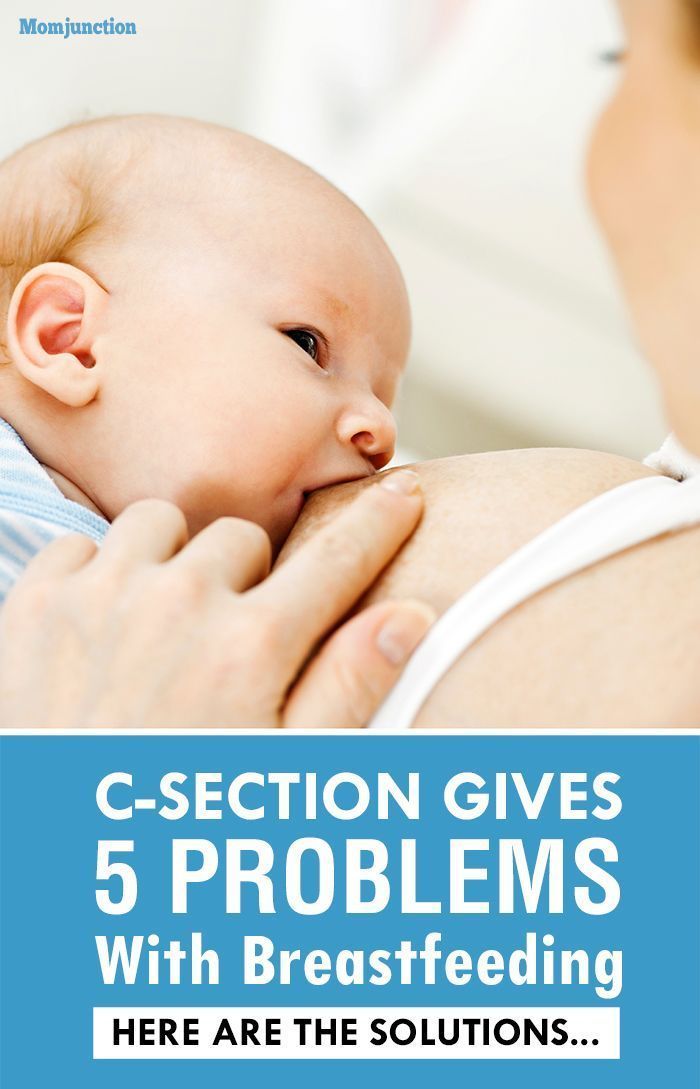 An incorrect latch is one of the most common causes of pain during breastfeeding. A newborn baby should take most of the lower half of the areola (dark skin around the nipple) into his mouth, and your nipple should rest against his palate, supported from below by the tongue.
An incorrect latch is one of the most common causes of pain during breastfeeding. A newborn baby should take most of the lower half of the areola (dark skin around the nipple) into his mouth, and your nipple should rest against his palate, supported from below by the tongue. - Contact a lactation consultant or healthcare professional to make sure your baby's mouth and torso are properly positioned during feeding and there are no other latch-on problems. The doctor may also examine the baby's mouth for physical abnormalities. nine0032
- Try other feeding positions. Reclining, cross cradle, underarm, or lying positions can relieve pressure on the most painful areas of your breasts.
- Gently wipe soaked nipples with water-soaked cotton swabs after each feed to remove milk residues that can cause infection.
- Air dry nipples or blot with a clean, soft muslin or flannel cloth to prevent bacterial growth in a humid environment.
 Use disposable or reusable bra pads to absorb leaking milk and remember to change them regularly. nine0032
Use disposable or reusable bra pads to absorb leaking milk and remember to change them regularly. nine0032 - Soften your nipples. An ultra-pure lanolin treatment will help relieve inflammation and dry skin. You can also apply a few drops of your own breast milk to your nipples. In both cases, you do not have to wash your breasts before the next feeding. You can also apply refrigerated hydrogel pads* to your nipples. They soothe the nipples and help relieve pain during feeding, as well as speed up healing.
- Protect your nipples. nine0008 Nipple shields* protect the sore area from rubbing against clothing.
- Be patient. The inflammation usually resolves after a few days as your body adjusts to breastfeeding and your baby learns to suckle.
- Seek medical attention, if pain during feeding does not go away after a few days. Constant inflammation of the nipples may indicate an infection that requires prompt treatment.

Problem #2. Baby doesn't latch on properly
Some newborns do not latch on properly right away. Maybe both of you just need more time to learn how to breastfeed, or maybe the baby was born prematurely, feels unwell after a difficult birth, or mom has flat or inverted nipples.
Solutions
- Contact a lactation consultant or healthcare professional who can help identify the cause of the problem and suggest solutions. nine0032
- Flat or inverted nipples must be pulled out. Nipple formers* fit comfortably in the bra and apply gentle pressure to the nipples to help them come out for easier feeding.
- Try different positions and ways to support your newborn. The baby needs to feel supported. He must be comfortable and breathe freely in order to suckle properly. Do not hold the child by the head and do not put pressure on it. Lean back and let your child take the lead.
 This stimulates his natural reflexes and helps him find and latch on to his breasts. nine0013 4
This stimulates his natural reflexes and helps him find and latch on to his breasts. nine0013 4 - When feeding, try to find the optimal position. Instead of putting your baby on and off, stressing both of you, try to position him in a way that is easy and comfortable for him. Hold the torso and legs of the baby close to you, support him by the shoulders and hold him firmly so that he feels safe. Let the baby's head rest freely on your arm so that he can tilt it back slightly and breathe freely. The chin should be pressed against your chest. If these small adjustments don't make feeding more comfortable for your baby, seek help from a lactation consultant or healthcare professional. nine0032
- Use nursing pads. If your baby is having difficulty latch-on, a lactation consultant or healthcare professional may suggest trying nursing pads*. A nipple with an overlay is more convenient to take in the mouth, so it is larger and more rigid.
 Do not use nursing pads for a long time.
Do not use nursing pads for a long time.
Problem #3. Not enough breast milk
You will produce little breast milk at the very beginning, as the hormonal changes that trigger milk production occur slowly and do not end until the second or fourth day after birth. nine0013 2 You may be worried that your baby is not getting enough milk, but in the early days his stomach is still too small and feedings are frequent, so don't worry. The only things to worry about these days are excessive weight loss, too few wet and soiled diapers, or signs of dehydration in the baby. For more information on how often a newborn should urinate and void, see Breastfeeding Newborns: What to Expect in the First Week. nine0003
Solutions
- Contact a Lactation Consultant or your healthcare provider who can determine if you have problems with milk production. The sooner you do this, the better.
- Feed your baby on demand, not on a schedule.
 In the first week after birth, your baby will ask to breastfeed every two to three hours (or more often!), both day and night. Such frequent feeding helps to establish the production of breast milk. nine0032
In the first week after birth, your baby will ask to breastfeed every two to three hours (or more often!), both day and night. Such frequent feeding helps to establish the production of breast milk. nine0032 - Take care of yourself. It's not always easy with a newborn, but try to rest whenever you can, eat right, and accept any help around the house or with older children that your loved ones can give you to fully focus on breastfeeding.
- Try expressing milk. If a baby is feeding frequently but not gaining any weight, a lactation consultant or doctor may recommend pumping to increase breast milk production. If milk is not coming out at all, you can try the Medela Symphony Dual Electric Clinical Breast Pump**. It features an Initiate program that mimics a baby's natural sucking rhythm for the first few days. nine0032
Problem #4. Breast full and heavy
Your breasts will become fuller and heavier as milk comes in.
If the baby suckles well and often, this should not cause any problems. However, in some women, the breasts become so full that they become hard and painful. This condition, called breast swelling, can cause discomfort. The swollen chest seems to be “burning”, now all the activity of your body is concentrated in it, resembling a busy traffic at rush hour. Fortunately, this condition usually resolves within 24 to 48 hours. However, due to the swelling of the mammary glands, the nipples can become flat and the baby may have difficulty latch-on. nine0013 5
Solutions
- Feed your baby often. Try to breastfeed at least 8-12 times a day. This is the main way to alleviate this condition. For more tips and tricks, see the article on Breast Swelling. 6.7
- Call your healthcare provider, if symptoms persist for more than 48 hours, you have a fever, or your baby is unable to breastfeed due to swelling.

Problem #5. Milk is leaking
Breast leakage is very common in the early days of breastfeeding when milk production begins. Milk may leak from one breast while you are feeding the other, when you sleep on your stomach, or when something accidentally triggers the milk flow reflex, such as when you hear a baby crying in a store. The leakage usually stops after about six weeks.
Solutions
- Protect clothes from stains will help disposable or reusable bra pads to be used day and night. nine0032
- Don't waste precious drops! Breast milk collection pads* fit inside the bra and allow you to collect any leaking milk. This is a very useful thing when there is too much milk and the pads are not absorbing well, or when one breast is leaking while you are feeding the other. If you want to save the collected milk, use only the milk collected at the feeding. Place it in a sterile container and refrigerate immediately if you are not supplementing with it right away.
Collected milk must be used within 24 hours. The breast milk collection sleeves should not be worn for more than two to three hours at a time. nine0032
Problem #6. There seems to be too much milk
Sometimes when milk comes in, too much is produced! In the first few weeks there may be an overabundance of milk, but usually everything returns to normal soon. 7 Up to this point, the breasts may be heavy and sore almost all the time, even immediately after a feed, and a lot of milk may leak. A strong flush can cause a baby to cough or choke, vomit immediately after a feed, have tummy discomfort, or have hard, frothy, greenish stools. These are all signs that you are having too much milk, but the problem may resolve itself as your breasts get used to the new function. nine0003
Solutions
- Express some milk by hand at the beginning of each feed to ease the force of the flush.
- Try to feed while leaning back: this will help your baby control the flow of milk.
The "cradle" position is also good: hold the baby obliquely by the shoulders so that the head can lean back slightly while on your arm. The torso of the baby will be located diagonally on you.
- Be kind and patient. Let your baby rest and absorb milk both during and after feeding. Don't move your baby too much or too fast, as this can make him nauseous. As the baby grows, he will learn to better cope with the rush of milk, which is likely to weaken anyway.
- Use the towel or swaddle to soak up spilled milk if the baby can't handle the flush, and place the breast milk collection pad on the other breast to catch any spilled milk. nine0032
- Contact a lactation consultant or doctor if problems persist after a few weeks . He will examine you and may suggest one-sided feedings or hourly breast changes (“breast duty”) to reduce your milk supply.
Related materials: Difficulties in breastfeeding in the next few weeks and problems with breastfeeding after the first month
Literature
1 Wagner EA et al. Breastfeeding concerns at 3 and 7 days postpartum and feeding status at 2 months. Pediatrics . 2013: peds -2013. - Wagner I.A. et al., "Breastfeeding Problems at Days 3 and 7 of a Child's Life and Type of Feeding at 2 Months". Pediatrix (Pediatrics). 2013:e865–e875.
2 Pang WW, Hartmann PE. Initiation of human lactation: secretory differentiation and secretory activation. J Mammary Gland Biol Neoplasia 2007;12(4):211-221. - Pang, W.W., Hartmann, P.I., "Lactation initiation in the lactating mother: secretory differentiation and secretory activation." G Mammary Gland Biol Neoplasia. 2007;12(4):211-221.
3 Cadwell K. Latching - On and Suckling of the Healthy Term Neonate: Breastfeeding Assessment. J Midwifery & Women ’ s 2007;52(6):638-642. — Cadwell, K., "Latching and sucking in healthy newborns: evaluation of breastfeeding." F Midwifery Women Health. 2007;52(6):638-642.
4 Colson SD et al. Optimal positions for the release of primitive neonatal reflexes stimulating breastfeeding. Early Hum Dev . 2008;84(7):441-449. - Colson S.D. et al., "Optimal Positions for Provoking Primitive Innate Reflexes to Induce Breastfeeding." Airlie Hume Dev. 2008;84(7):441-449.
5 Jacobs A et al. S3-guidelines for the treatment of inflammatory breast disease during the lactation period. Geburtshilfe Frauenheilkd. 2013;73(12):1202-1208. - Jacobs A. et al., "Recommendations S -3 for the treatment of inflammatory diseases of the breast during breastfeeding. Geburtskhilfe und Frauenheilkünde. . ABM Clinical Protocol# 4: Mastitis , Revised MARCH 2014. Breastfeed - 9020: 5): 5) H., Academy of Breastfeeding Protocol Committee, AVM Clinical Protocol #4: Mastitis, March 2014 edition of Brestfeed Med (Breastfeeding Medicine). 2014;9(5):239-243.
7 Academy of Breastfeeding Medicine Protocol Committee. ABM clinical protocol # 20: Engorgement. Breastfeed Med . 2009;4(2):111-113. - Protocol Committee of the Academy of Breastfeeding Medicine, "AVM Clinical Protocol No. 20: Engorgement, Revision 2016". Brestfeed Med (Breastfeeding Medicine). 2009;4(2):111-113.
Read instructions before use. Consult a specialist about possible contraindications. nine0017
* RU No. ФСЗ 2010/07352 of 07/19/10
** RU No. ФСЗ 2010/06525 of 03/17/2021
What is breast swelling? | Breast swelling
Some mothers experience breast swelling when milk begins to flow in the first days after childbirth. Usually this phenomenon is temporary and easily eliminated. Read our article to find out how to help yourself.
Share this information nine0003
Sioned Hilton, health visitor, neonatal nurse and lactation consultant:
A mother of three, Sioned Hilton has been supporting families with newborns and young children for over 30 years. She provides advice on breastfeeding and pumping, both in clinics and at home. In addition, Schoned writes articles for parenting magazines, attends conferences, and conducts seminars for attending physicians.
When you start breastfeeding, you first produce a small amount of colostrum, which gradually increases over the first few days. After about two to four days, production increases significantly. This phenomenon is called the "arrival" of milk. nine0013 1
One of the signs that milk is starting to come in is a change in the breast - it fills up and becomes firmer. This is due not only to an increase in the amount of milk, but also to increased blood flow and additional lymphatic fluid to the breast tissues. 2
If the child eats well and often, then for most mothers this feeling of heaviness disappears over time without any complications. However, some women produce so much milk that their breasts fill up and become painful and very hard. This condition is called breast swelling. And although everything usually passes in a day or two, this period can be quite painful. nine0003
How does breast swelling manifest itself?
Swelling may affect one or both breasts. It can cause swelling, sometimes down to the armpits, and a throbbing sensation. The chest becomes quite hot, sometimes lumps are felt in it. All this is due to the fact that a huge number of processes take place inside. You may also notice other symptoms, such as the skin on your breasts becoming shiny and tight, and your nipples becoming hard and flat. Swelling of the mammary glands can even cause a temperature to rise to 37.5–38.3°C (99–101°F). 3
In addition to pain, swollen breasts are also dangerous because they can make breastfeeding difficult, and this, in turn, will worsen the situation even more. If the baby finds it difficult to latch on because the nipples have become flat and the breast tissue is firmer, nipples may become inflamed. In addition, in the event of a poor grip, he will not be able to completely empty the chest. Thus, if left untreated, swelling of the mammary glands can lead to blockage of the milk ducts, mastitis, and reduced milk production. nine0003
What causes breast swelling?
Usually breast swelling is due to the fact that the child does not feed often enough (less than eight times a day). In principle, this can happen to any mother, but women who have undergone various breast surgeries, including breast augmentation, are more prone to swelling of the mammary glands. 2 Wearing a bra that is the wrong size or that is too tight can increase discomfort and lead to clogged milk ducts and even mastitis. nine0003
Breast swelling can occur in both breastfeeding mothers and mothers who are not or cannot breastfeed. The hormonal changes that occur after the birth of a baby and the release of the placenta and increase milk production are independent of whether you are breastfeeding or not. Swelling can also occur if the number of feedings is drastically reduced, for example, if the child becomes ill, sleeps longer, starts eating solid foods, or goes to nursery.
How to treat breast swelling? nine0013 2
The best cure for swollen breasts is a hungry baby! Try to empty your breasts as much and as often as possible to facilitate the release of milk. To do this, feed your baby on demand, preferably eight to twelve times a day.
Maintain skin-to-skin contact with your baby, cuddling as often as possible during the day and at night when you are awake. This will allow him to smell the attractive smell of your milk and have easy access to the breast, and you will be able to better monitor signs that he is hungry and, accordingly, feed more often. Let the baby eat enough from one breast before offering the second. nine0003
It's a good idea to see a lactation consultant or specialist to check if your baby is properly grasped and positioned. It depends on how well he will eat and empty his chest. The tips below will also help you relieve the symptoms of breast swelling.
Tips for Relieving Swollen Breast Symptoms 2
- Breastfeed at least eight times a day.
- Make sure your baby is latching on well.
- Try other feeding positions.
- Gently massage your breasts during feeding to improve the flow of milk.
- Express some milk by hand or with a breast pump before feeding to soften the nipple and make it easier for your baby to latch on.
- If your breasts are still firm and full after a feed, pump more until you feel better.
- If your baby is unable to breastfeed, express milk for him. Pumping must be continued until the breast becomes softer, and do this at least eight times a day. nine0032
- Try the areola pressure softening technique. This helps to remove excess fluid from the breast. A lactation consultant or specialist will show you how to do this.
- If milk is leaking, try taking warm showers or applying a warm flannel to your breasts just before feeding or expressing to soften your breasts and make it easier for your milk to flow.
You should not, however, warm the chest for more than two minutes, as this can only increase swelling. nine0032
- If your milk isn't leaking, try applying cold compresses, chilled gel pads, or even frozen green peas wrapped in a towel for ten minutes after feeding to reduce swelling and relieve pain.
- Put clean cabbage leaves in your bra. Yes Yes! For many moms, it really helps reduce swelling and discomfort, and there are scientific explanations for this. 4
- Take an anti-inflammatory pain reliever. While breastfeeding, you can take some medications, in consultation with your doctor. Always consult your doctor, follow the drug manufacturer's instructions and the pharmacist's recommendations. To learn more about medications and breastfeeding, read our article on breastfeeding when sick. nine0032
- Wear an appropriately sized and comfortable nursing bra, avoid underwire or no bra at all.
- Do not skip feedings or stop breastfeeding abruptly as this may increase breast swelling.
Seek medical advice if your 5 temperature rises above 38°C or if your baby is unable to suckle due to breast swelling.
And in any case, try to remain calm. Your body is just getting used to producing milk and feeding your baby. Breast swelling should go away on its own soon after you both get comfortable with breastfeeding. nine0003
Literature
1 Pang WW, Hartmann PE. Initiation of human lactation: secretory differentiation and secretory activation. J Mammary Gland Biol Neoplasia. 2007;12(4):211-221. - Pang, W.W., Hartmann, P.I., "Lactation initiation in the lactating mother: secretory differentiation and secretory activation." G Mammary Gland Biol Neoplasia. 2007;12(4):211-221.
2 Berens P, Brodribb W. ABM Clinical Protocol# 20: Engorgement, Revised 2016. Breastfeed Med . 2016;11(4):159-163. - Behrens P, Brodrhibb W, "AVM Clinical Protocol #20: Engorgement, 2016 edition". Brestfeed Med (Breastfeeding Medicine). 2016;11(4):159-163.
3 Affronti M Low-grade fever: how to distinguish organic from non-organic forms. Int J Clin Pract. 2010;64(3):316-321. - Affronti M. et al., "Subfebrile temperature: how to distinguish organic from non-organic cases." Int Zh Klin Prakt. 2010;64(3):316-321.
4 Boi B et al. The effectiveness of cabbage leaf application (treatment) on pain and hardness in breast engorgement and its effect on the duration of breastfeeding. JBI Libr Syst Rev . 2012;10(20):1185-1213. - Boys B. et al., "Effectiveness of cabbage leaf (as a drug) for breast pain and engorgement, and its effect on the duration of breastfeeding." nine0203 JBAi Libr Sist Rev. 2012;10(20):1185-1213.
5 NHS Choices. How do I take someone's temperature? [Internet].


